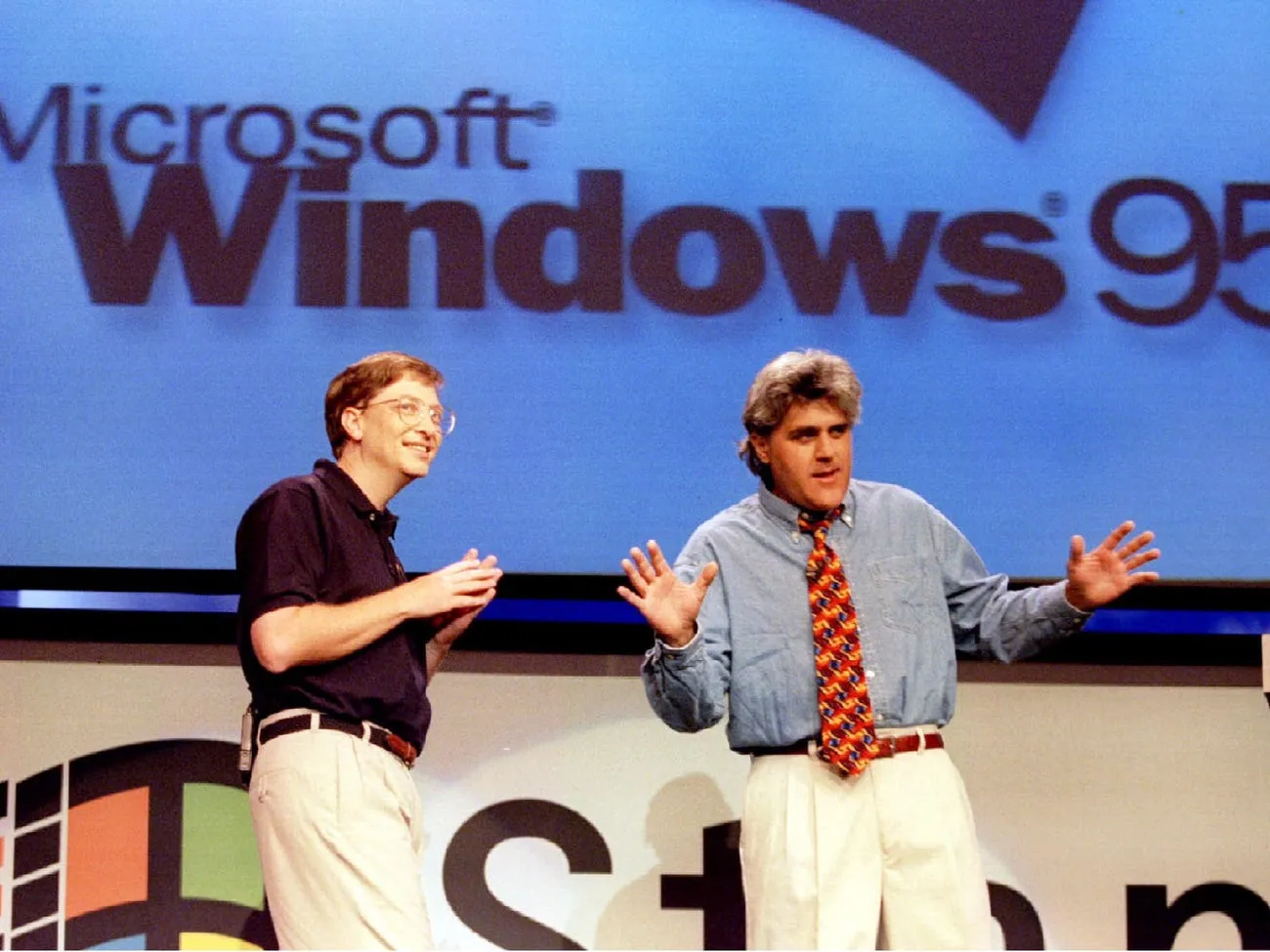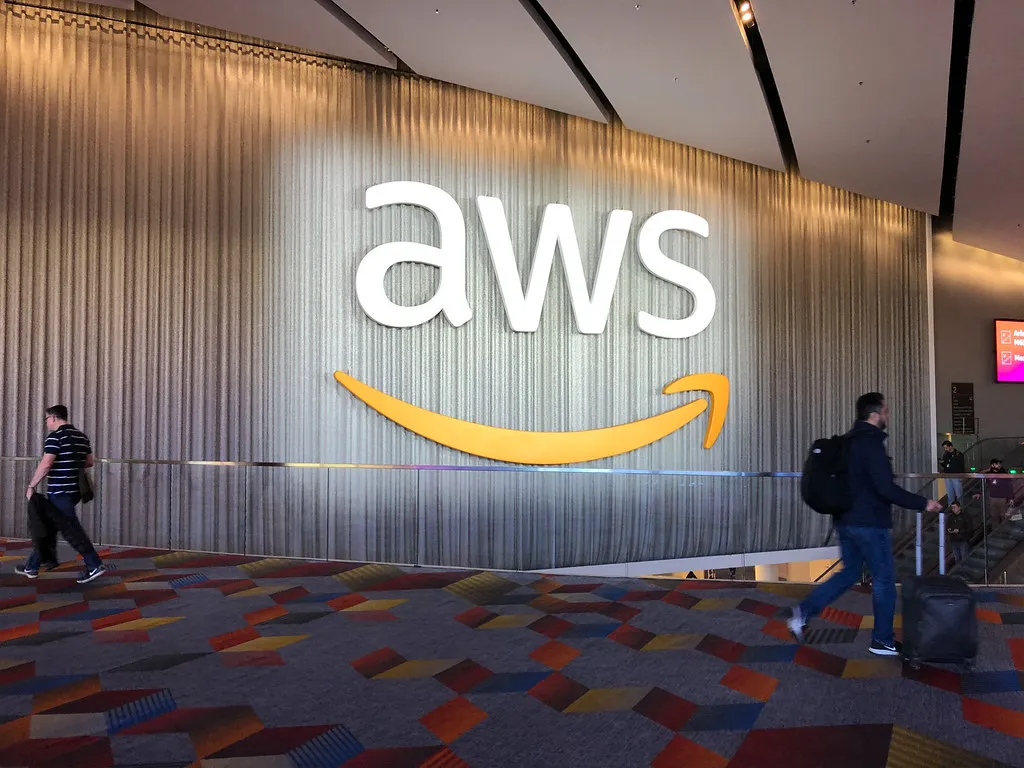Moments That Modernized: Four Decades of Tech's Tectonic Shifts

In this article, we're taking a ride in the time machine to explore the evolution of the software industry over the past 30 years. And who better to guide us than our very own tech-savvy hero - you! The story begins in an era before social media gurus and influencer marketing, you, a bright-eyed MBA grad from an East Coast school, pack up your sunblock and surfboard and head west.

1996: When CD-ROMs and C++ Ruled the Earth
Jay Leno and Bill Gates at the Windows 95 launch by Jeff Vinnick, Reuters
The year is 1996. Only a year has passed since Bill Gates and Jay Leno unveiled Windows 95 to the catchy tune of “Start Me Up” by The Rolling Stones. As an eager young product manager at Warehouse Software Inc., you see an opportunity in this new era of personal computing.
Most warehouse operators still rely on antiquated manual processes and paper ledgers to track inventory. A few of the more sophisticated ones have begun experimenting with basic database software like Microsoft Access or FileMaker Pro, but you envision a full-fledged client-server solution built in C++ using Microsoft Foundation Classes (MFC). Your vision is radical. An app with a graphical user interface (GUI) that will store data in a Microsoft SQL Server database.
Customer execs will then have a real-time view of inventory numbers. With PC sales skyrocketing, the potential market seems massive.
You pitch the concept to Warehouse Software Inc. executives and get the green light to proceed. You assemble a team of software engineers and database developers with expertise in ODBC and SQL Server. You decide to call the software “Warehouse Tracker,” with an entry price of $2,995 per license, sold on CD-ROM, of course.
Development follows a waterfall model. Analysts spend two months gathering requirements from potential customers, then the engineering team maps out a high-level design. It takes ten months of coding before version 1.0 is ready to ship.
Launch day is thrilling. The marketing team has prepared a press release and taken out a full-page ad in the “Logistics Ledger” a trade publication for warehouse operators.
Warehouse Tracker is a success that propels Warehouse Software Inc. forward as an innovator in inventory management software and you as a rising star at the company.
2006: AJAX, Flash, and Web 2.0
 Steve Jobs launching the iPhone by Robyn Beck, AFP
Steve Jobs launching the iPhone by Robyn Beck, AFP
It’s 2006, and as director of the Warehouse Tracker group, the future seems uncertain. Rumors are swirling that Apple will release a smartphone, rendering your BlackBerry obsolete. But that’s the least of your worries. Sales reps are blowing up your inbox, complaining that customers no longer want to use the Windows GUI app you built. It’s the 21st century, and Warehouse Tracker seems like a relic of the past. Web apps are now king.
You convince management that rewriting Warehouse Tracker as a hosted web application could win new customers. Customers wouldn’t need their IT departments to install anything or maintain their own SQL Server database. You could even charge a monthly subscription fee, reducing customers' upfront costs. The concept of “software as a service” or SaaS is still new, but you argue that while some customers may not convert to paid plans after a 30-day free trial, those who do will be locked in once you have their data. You propose starting at $99/month for 3 users.
Your lead architect wants to rebuild using a framework called Ruby on Rails. He argues you can build it with just 3 RoR developers and 1 UX designer. You’ll use PostgreSQL to store data and Agile methodologies to release a version in 6 months. Impressed with the speed and lower costs, you give the green light.
Marketing wants to run Google search ads promoting the product to those looking for warehouse software. You’re unsure about ditching trade shows for online marketing, but go along with it. They commission a new website built in Flash and ask you to blog about the product’s potential.
The SaaS version is a hit. You greatly expand your customer base and revenue.
2016: Microservices, Mobile Apps, and DevOps
 aws: reinvent by Andy Hay
aws: reinvent by Andy Hay
A decade has passed since Warehouse Tracker first launched as a web app. Now, as VP of Product, you realize another massive overhaul is long overdue. The legacy Rails app has served well, but it's buckling under the weight of growth. The interface looks antiquated, and your technical teams complain it's increasingly difficult to maintain. The days of cohosting are over; it's time to embrace the elasticity of the cloud. The old monolithic Rails app won't scale, but microservices will.
Your lead architect, now CTO, proposes a bold vision: rebuilding Warehouse Tracker on AWS. He claims an MVP could launch in just 3 months, with React Native simplifying building native iOS and Android apps. Mobile, you now realize, has become essential to your product. Enabling an OpenAPI backend will allow customers to build their own integrations through Zapier or custom scripts. You give the green light, hoping his clarity of vision matches your own.
You hire squads of full-stack developers, DevOps engineers, and mobile developers. Marketing wants to launch an influencer program to raise brand awareness. You have your doubts but defer to their judgment.
Three months later, a beta version of the new Warehouse Tracker launches on AWS. The interface is sleek, the microservices scale magnificently, and the mobile apps receive rave reviews.
Subscribed
2026: AI, Chatbots, and Intelligent Apps
 AI Chatbots by Midjourney
AI Chatbots by Midjourney
You are now the SVP of the product group. AI has taken the world by storm, and everyone wants an AI-driven product, whatever that means. The latest YC batch has a cohort of startups targeting Warehouse Tracker, waving the flag of AI as their weapon to take you down. You remain skeptical. Choosing a .ai domain name does not a unicorn make. But the board is concerned, and the CEO calls an off-site to dive in and strategize a response.
The off-site's energy is intense. Sales is clamoring for an AI solution yesterday, willing to take anything that lets them claim Warehouse Tracker leverages AI. To them, it's a matter of staying relevant in 2026. Development wants AI “copilots” to help them work faster.
Your turn arrives, and you speak passionately. You've been reading the boxcars.ai blog (how meta ), and you worry the discussion has been shortsighted.
“Let’s get back to first principles,” you say.
“What do our customers actually care about? After all, what is Warehouse Tracker’s real value?"
"Beyond the UI, code, and APIs, Warehouse Tracker helps customers run their warehouses. We encode our years of experience in warehouse management, our true intellectual property, into software workflows. If these workflows fit our customers, they love us. If they don't, they choose a competitor.
Consider an analogy: We're the Banana Republic. We've found an incredible new material but can only sell pre-set sizes (S, M, L) shirts. Adding more would disrupt our supply chain. AI is like offering tailored shirts on-demand at no extra cost. Our expertise is the material; AI enables bespoke versions for every customer without professional services or maintenance headaches."
Hands shoot up. Would that make us a services company? What can be customized? How would it work?
You begin to speak, but it's late, and the newsletter has become a novel. Let's pick it up when we meet next, you say.
Want these insights delivered? Subscribe below.